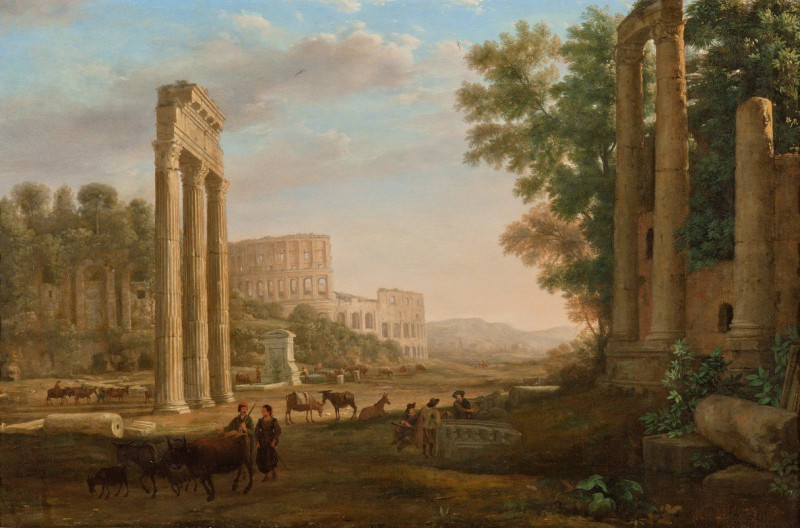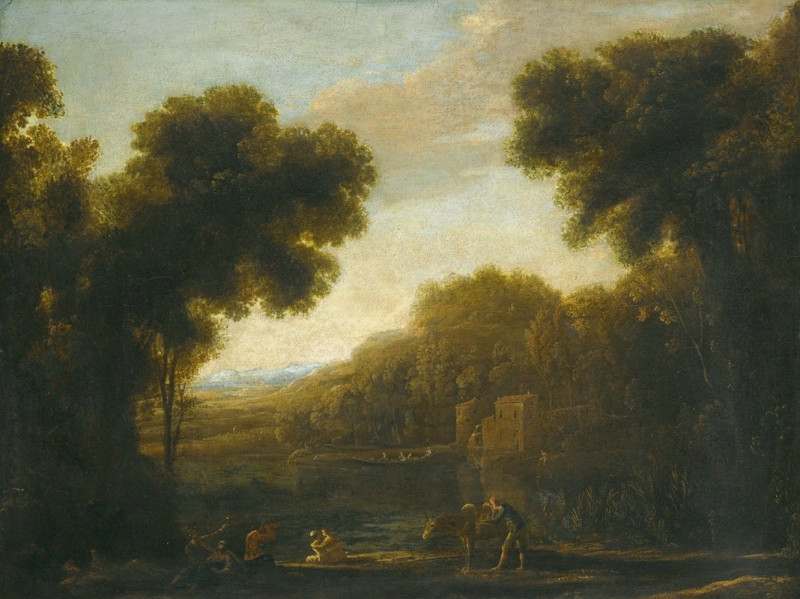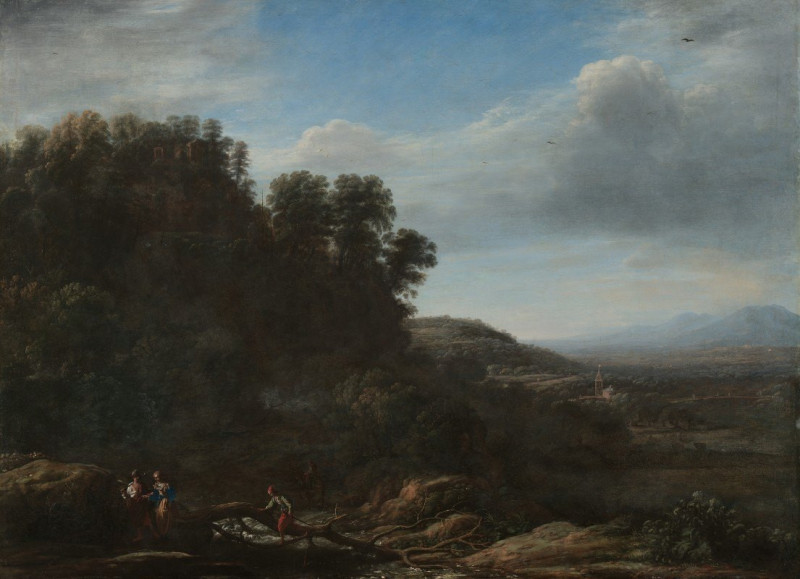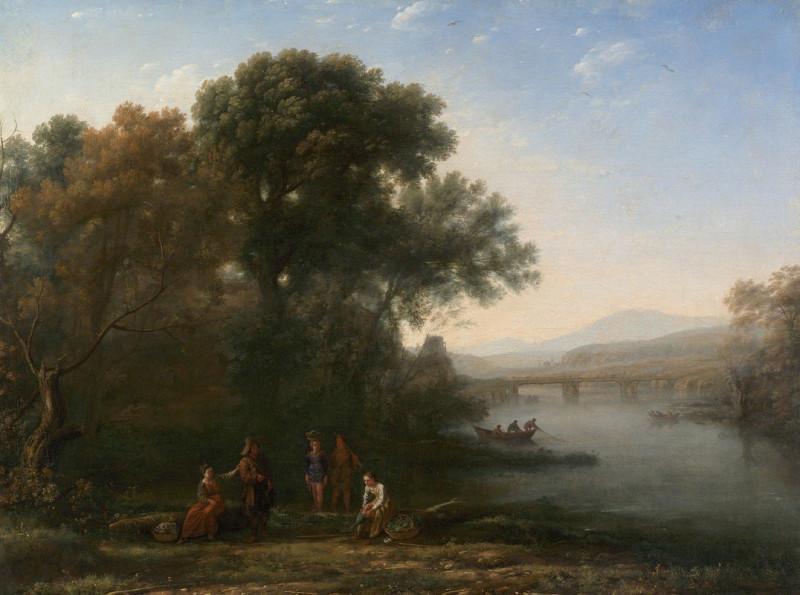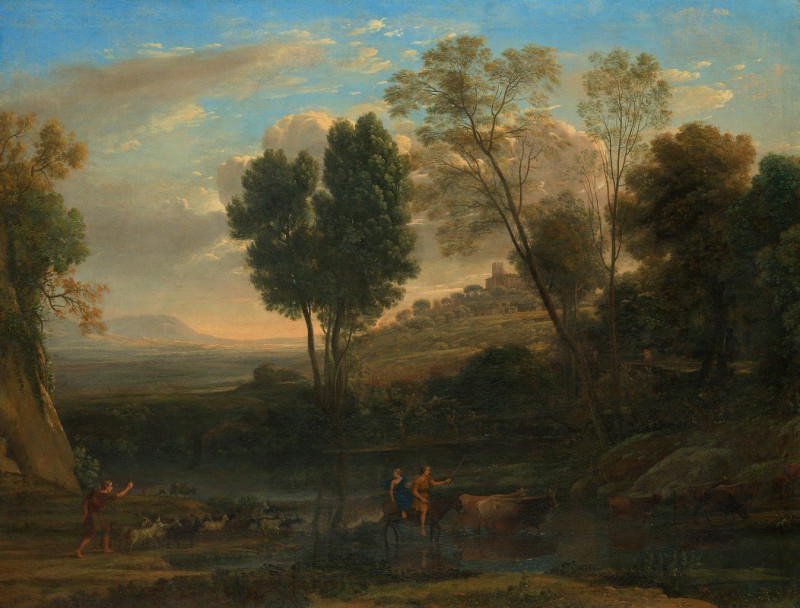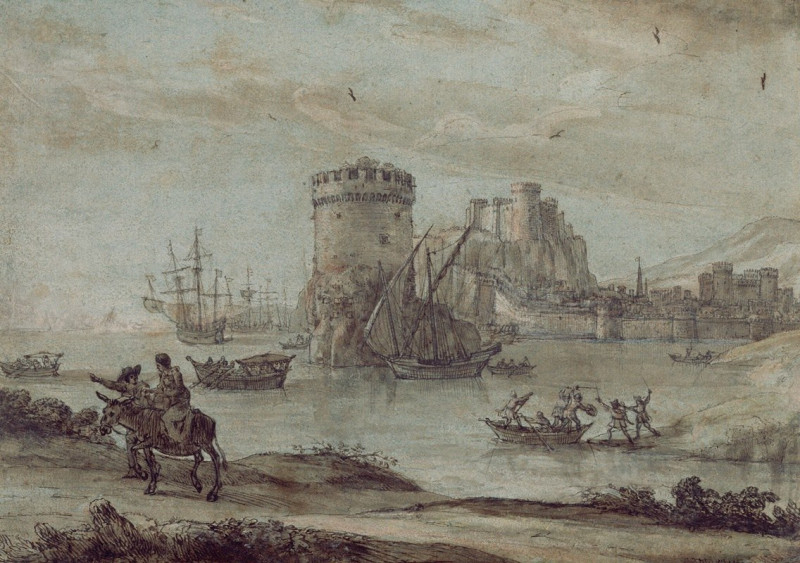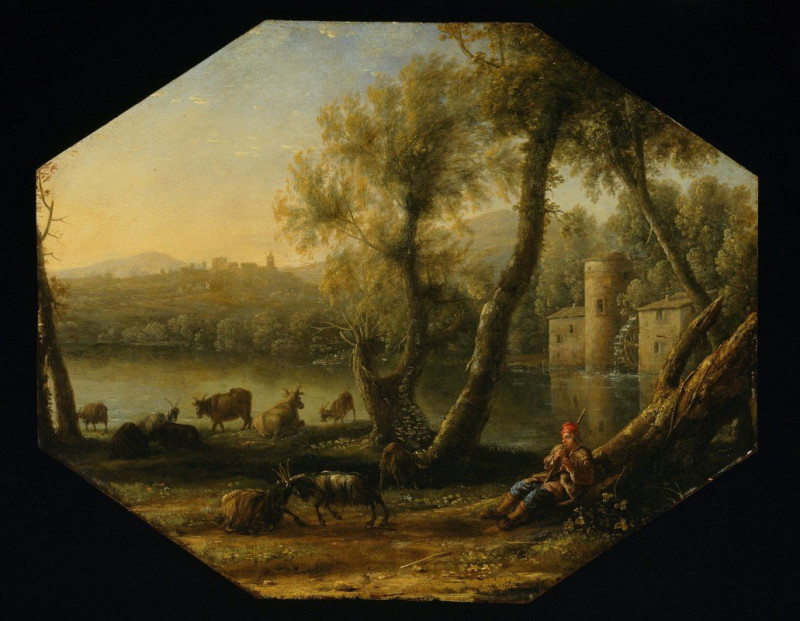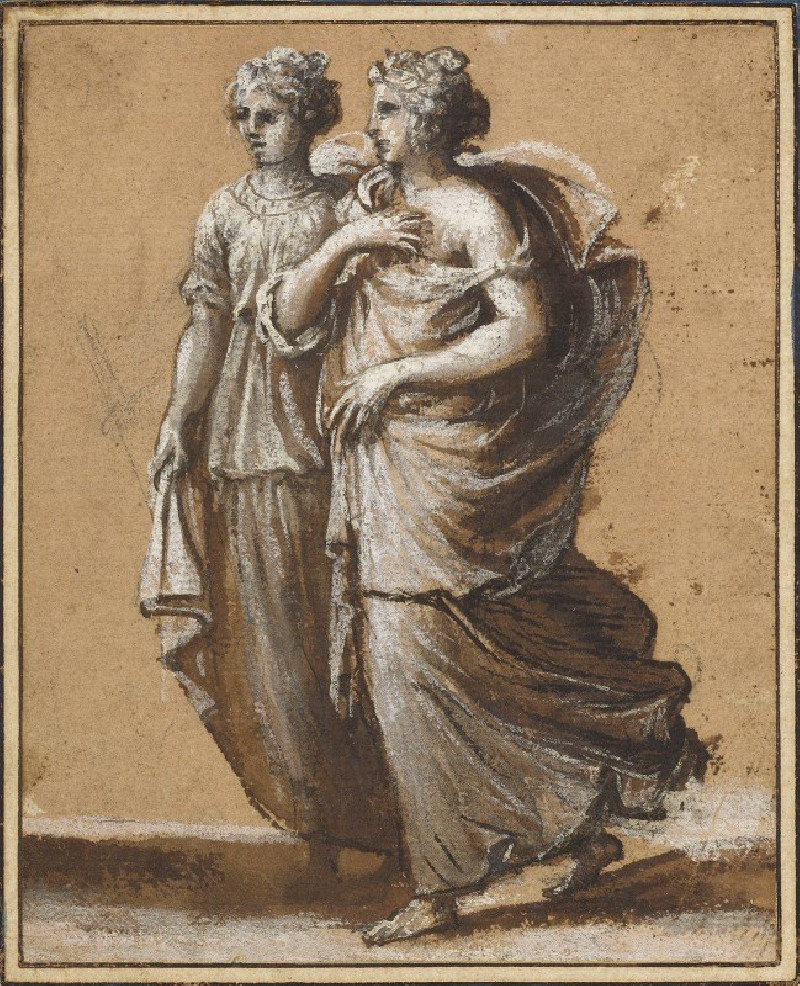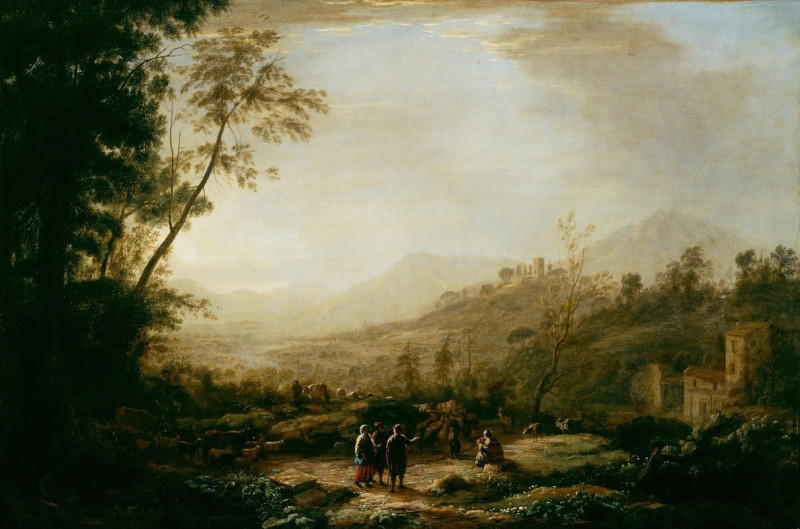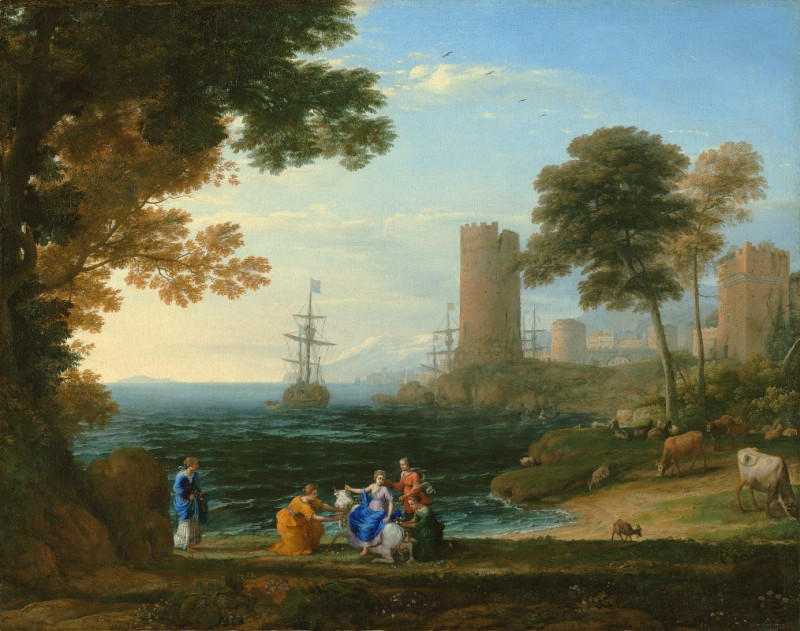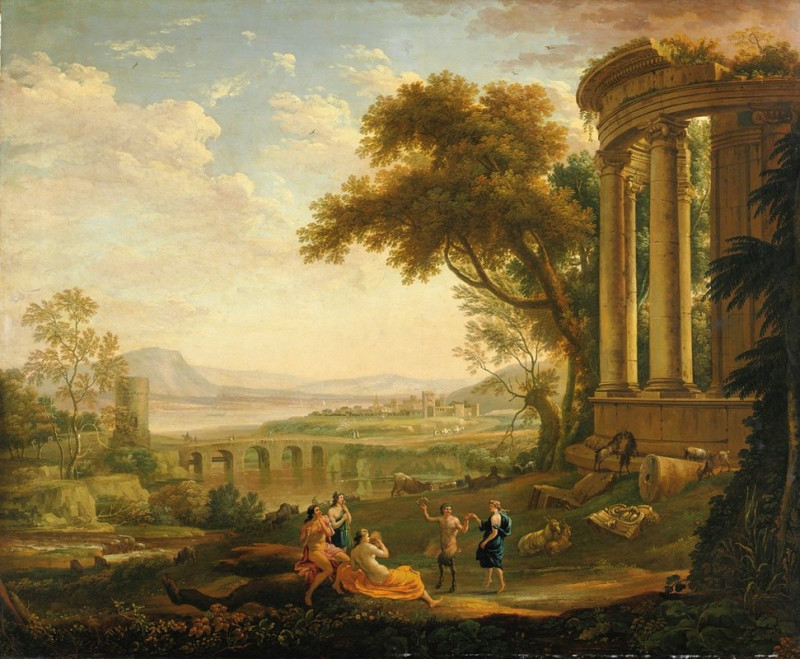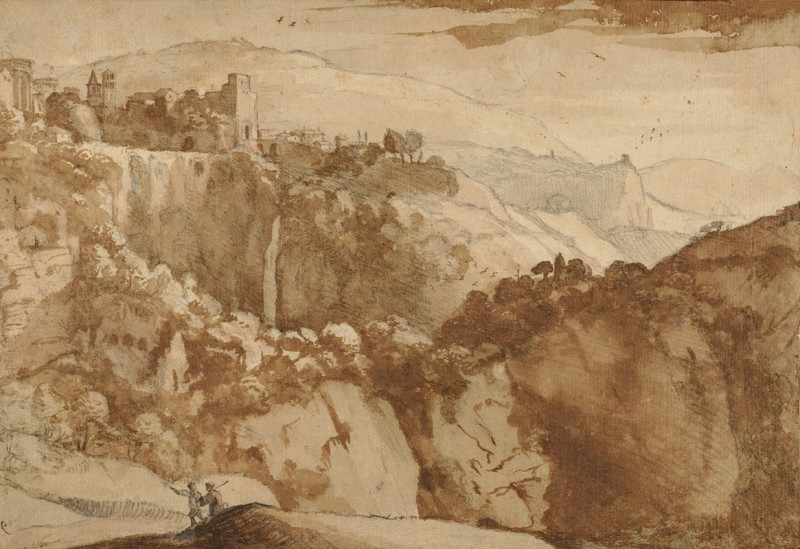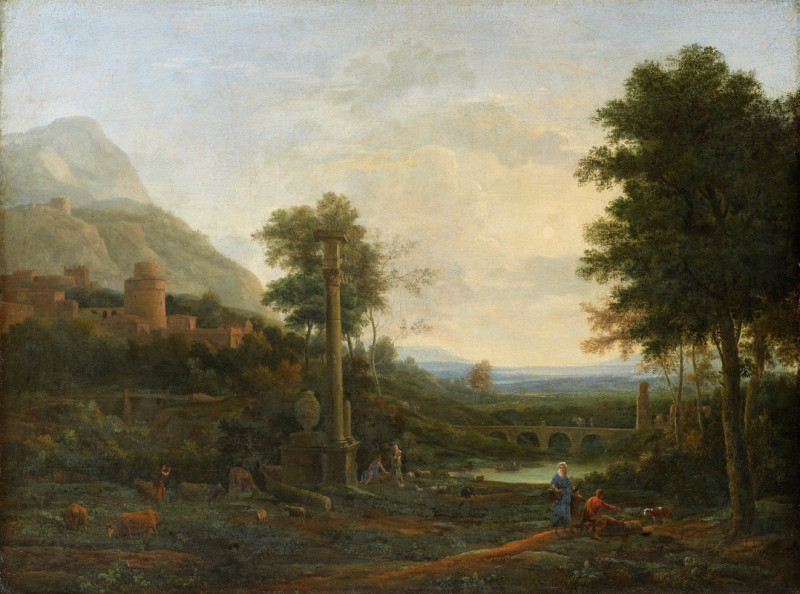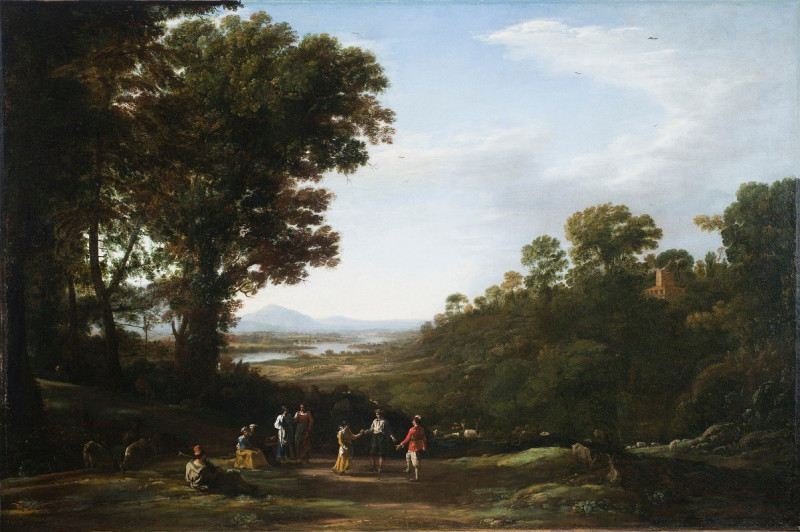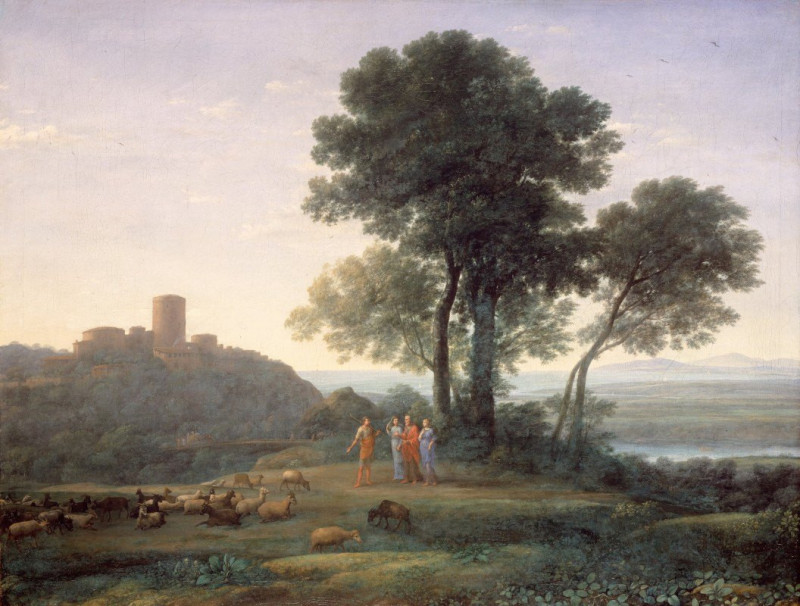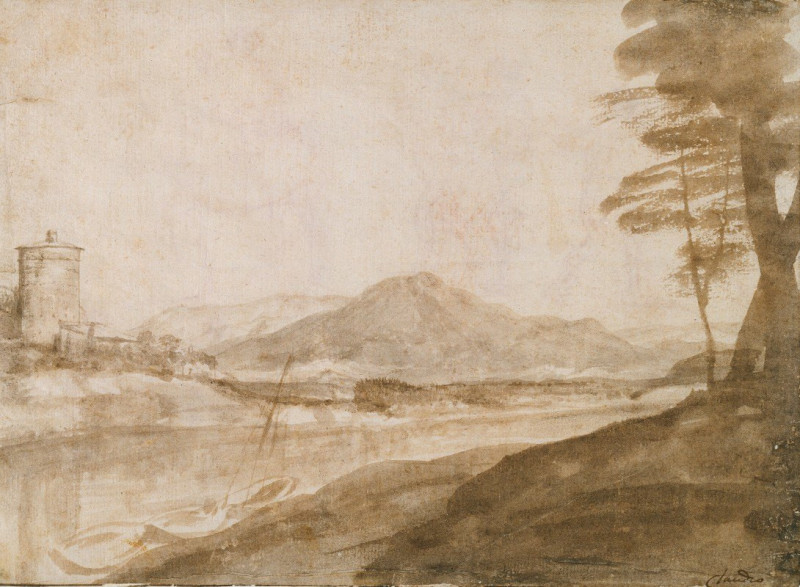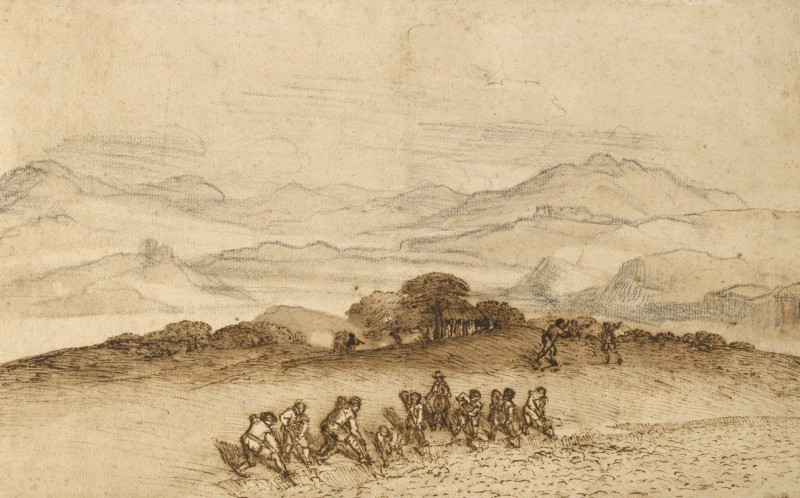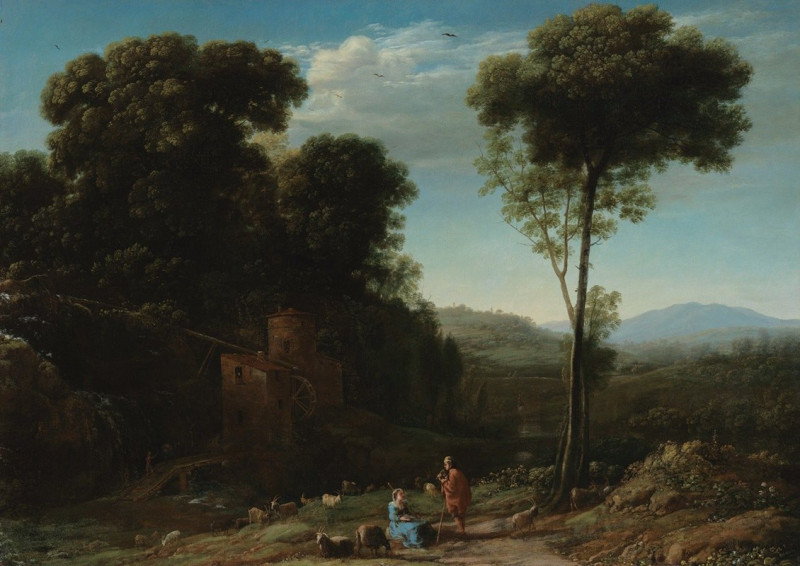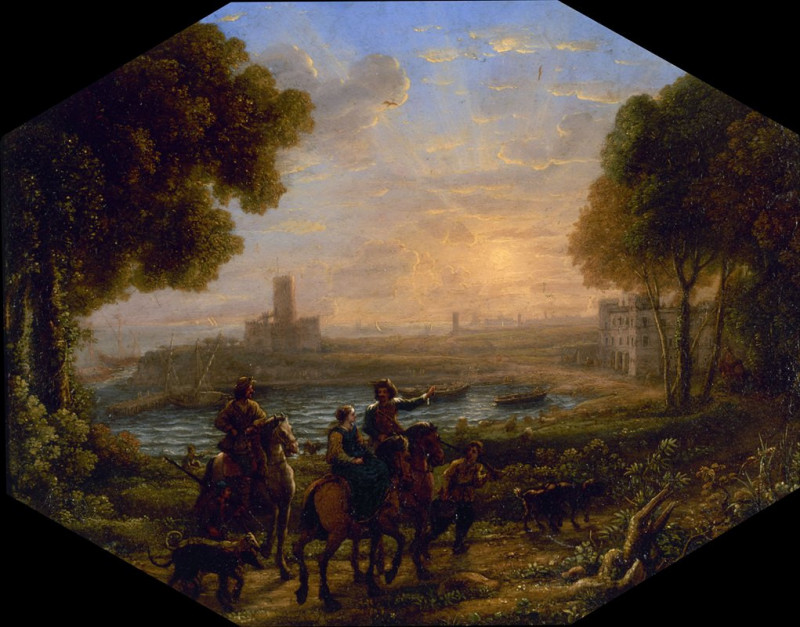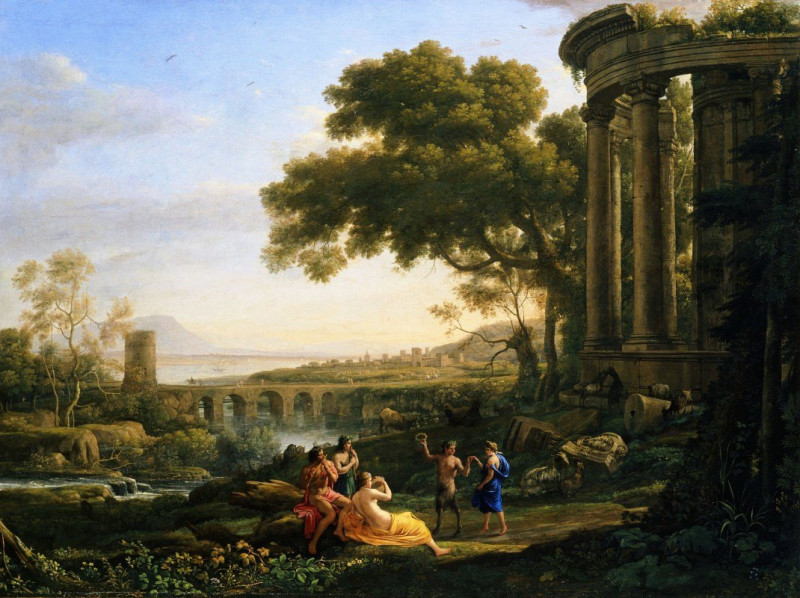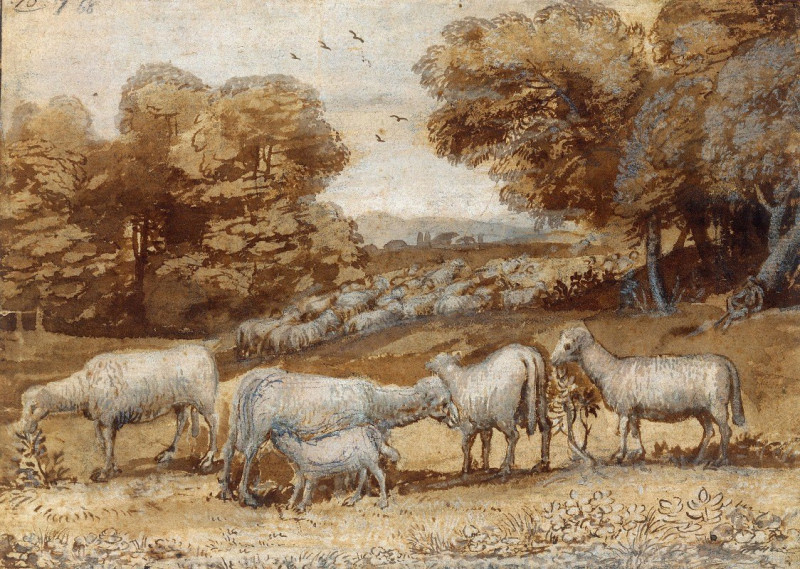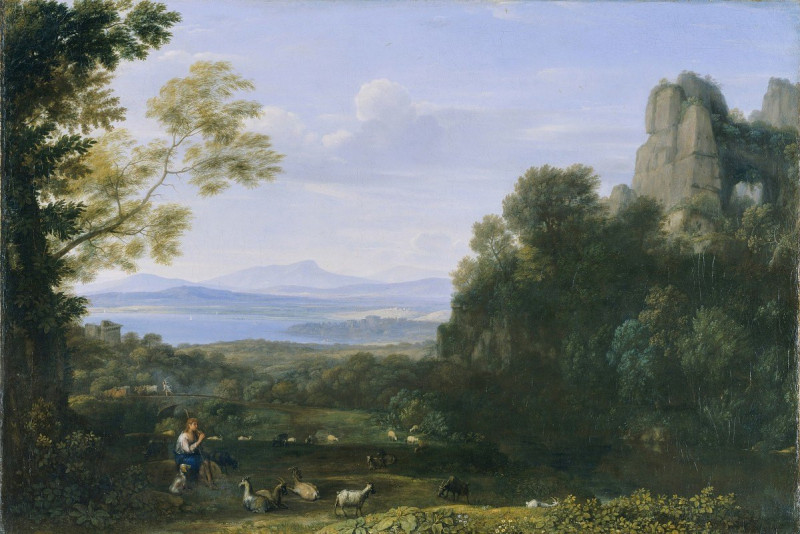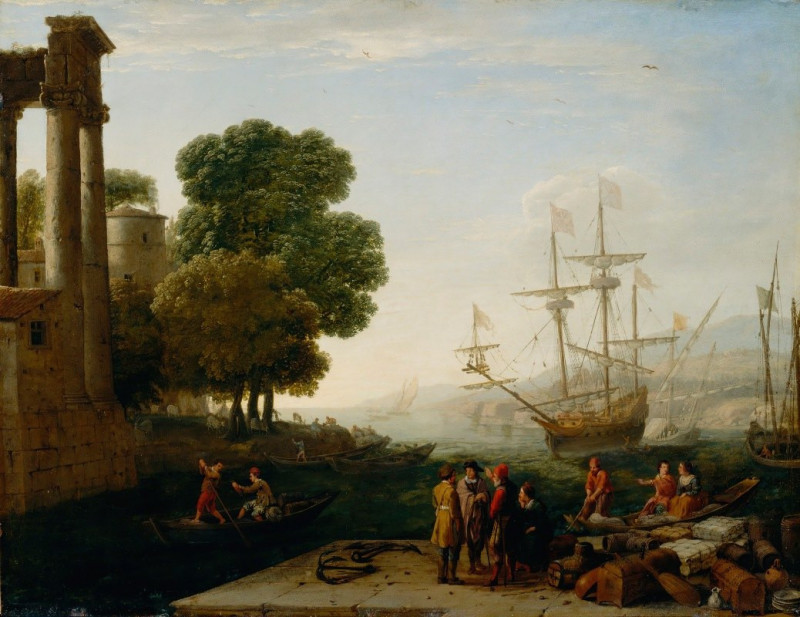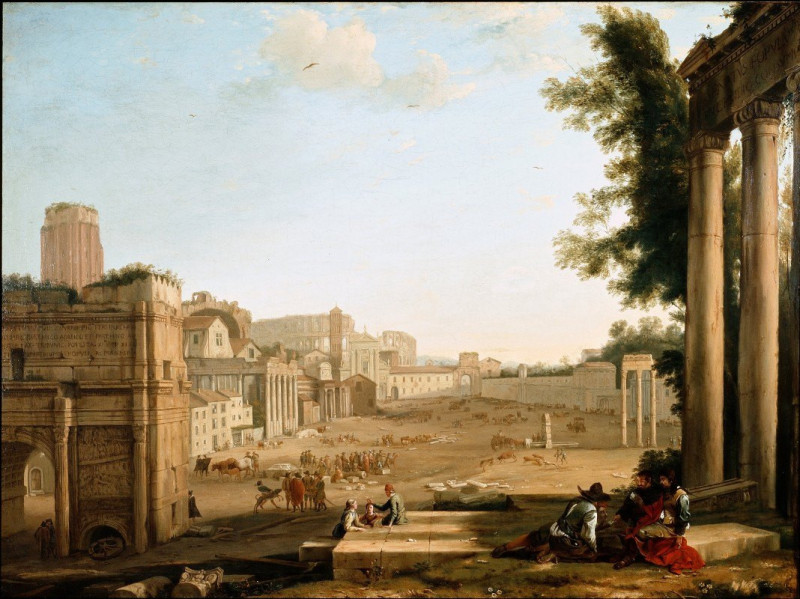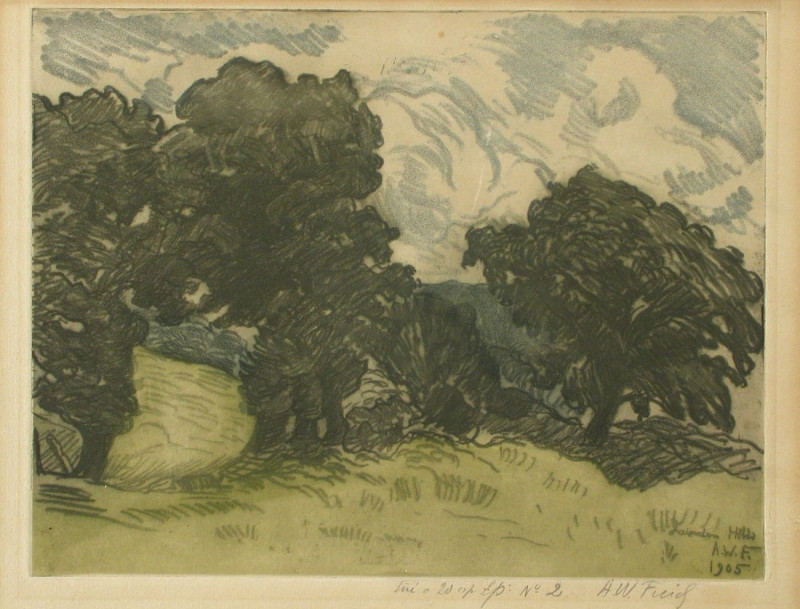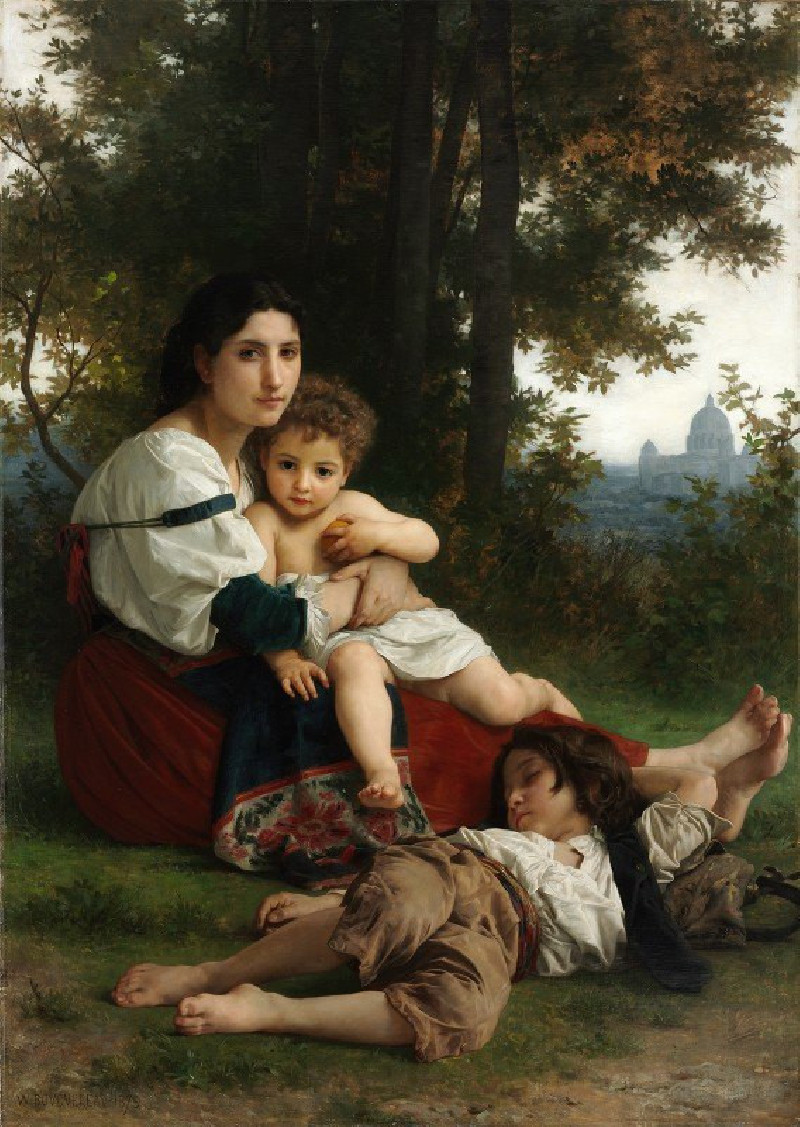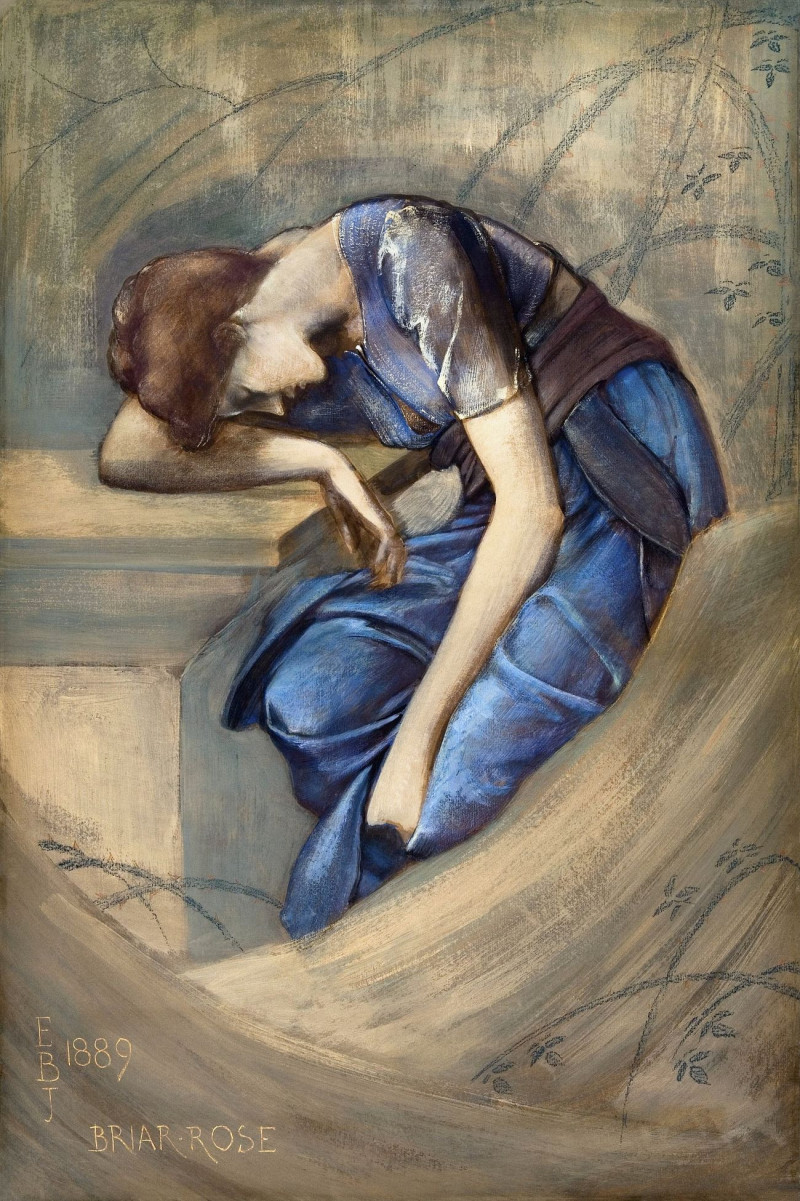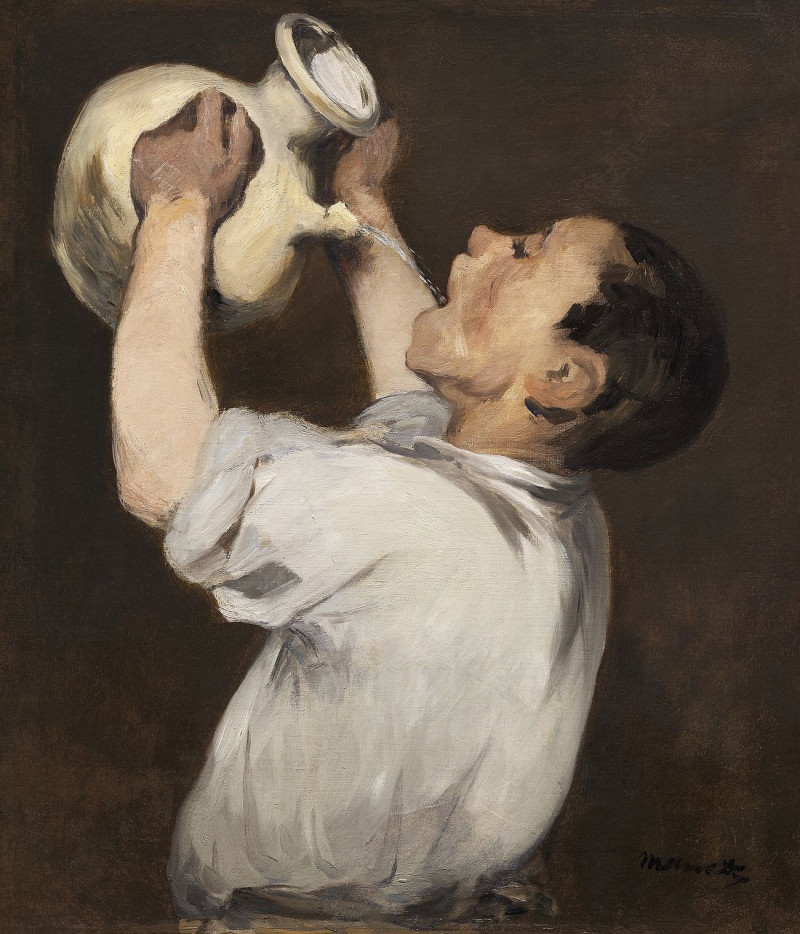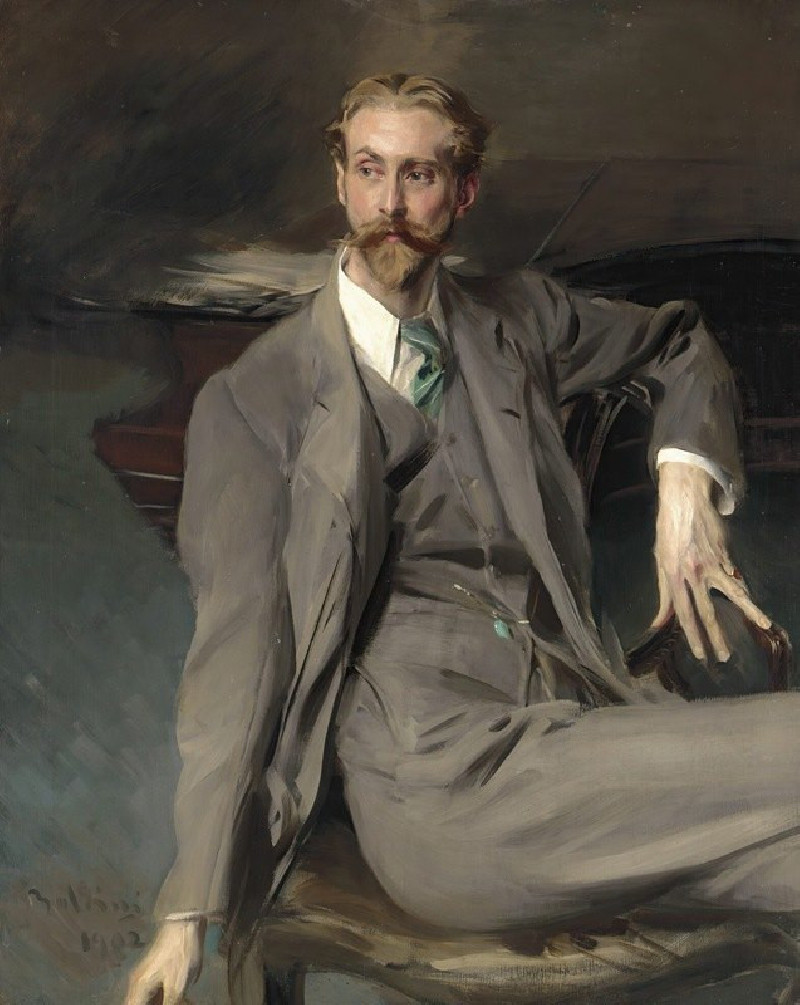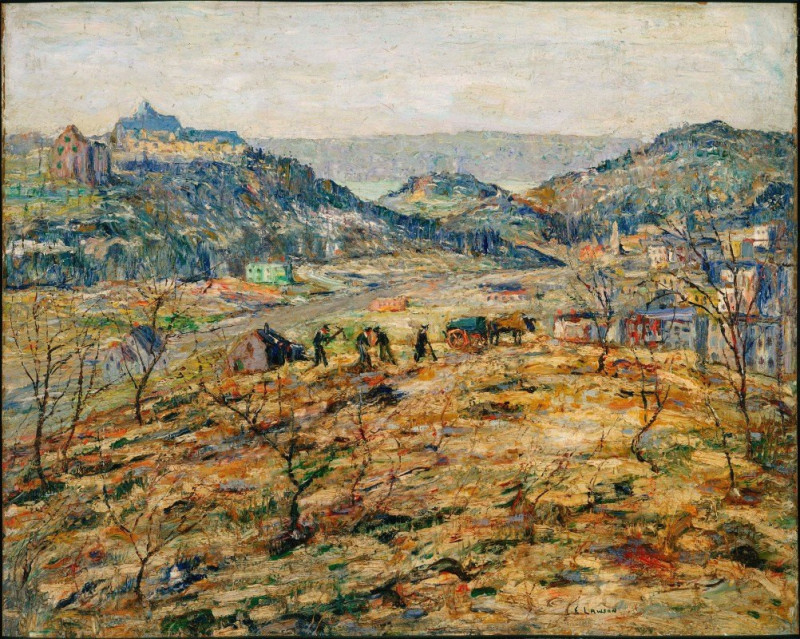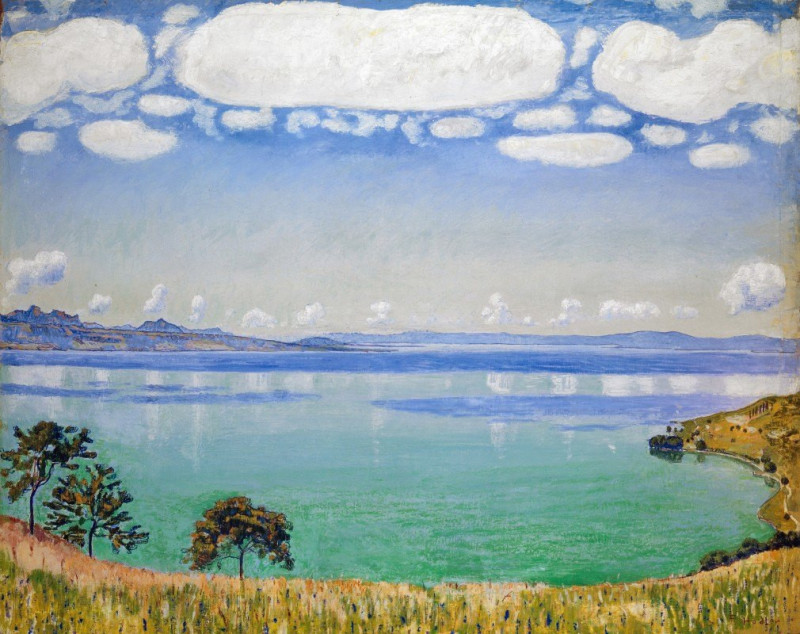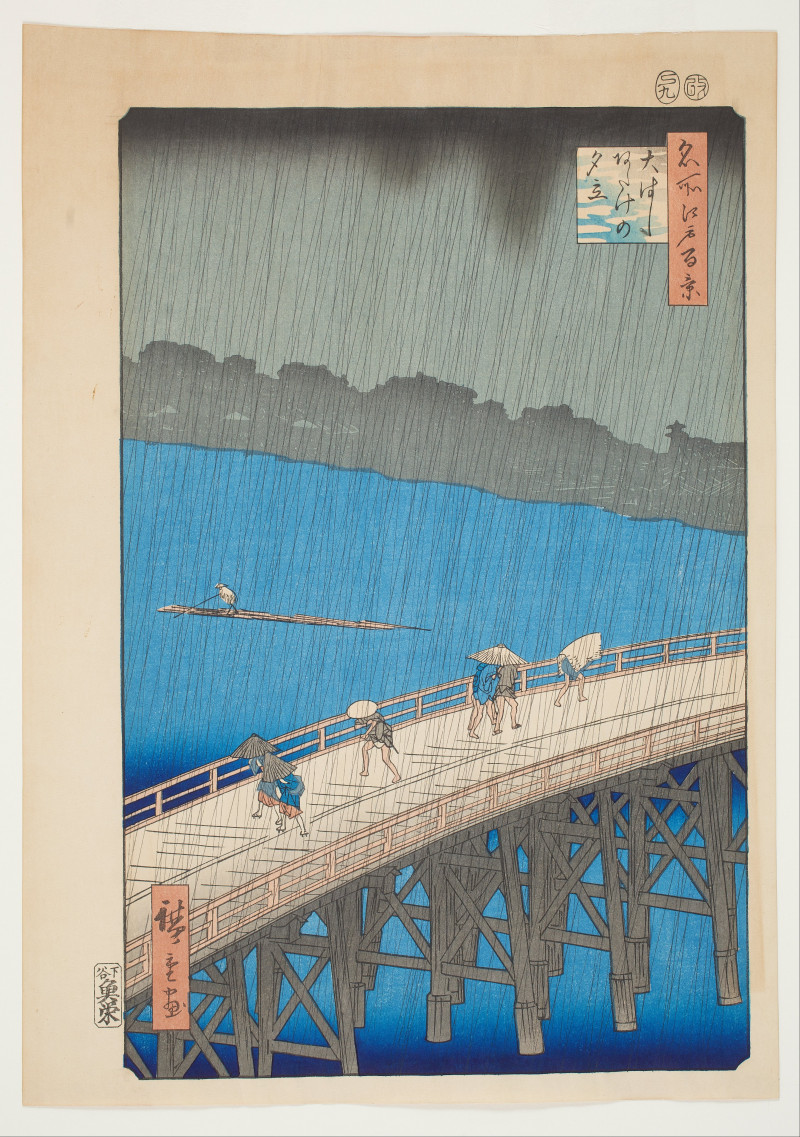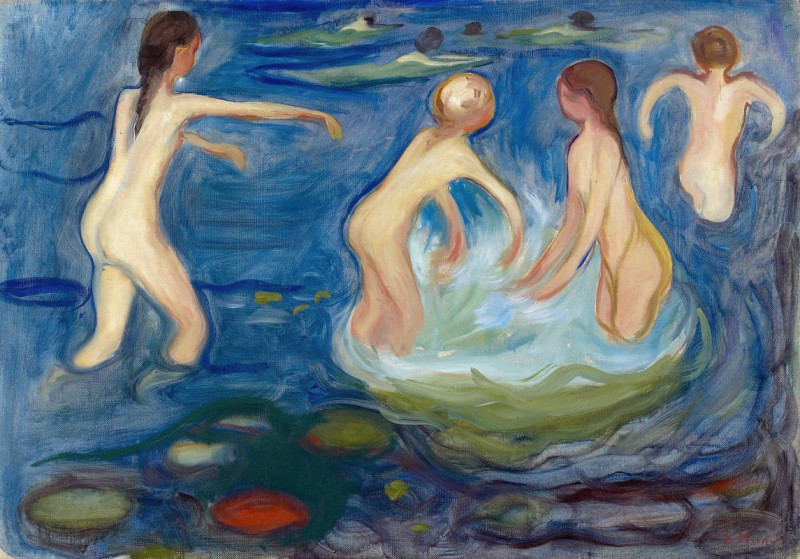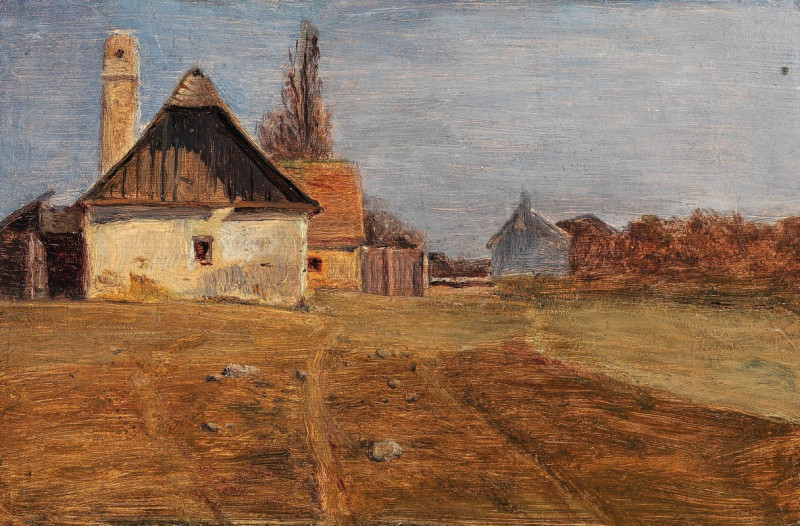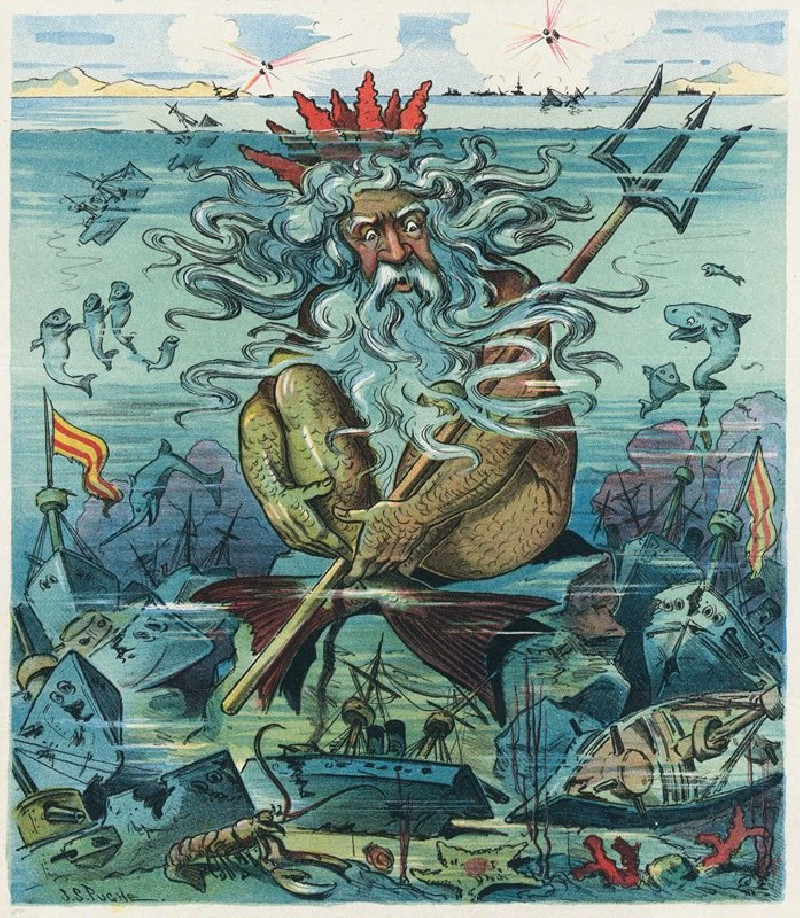Capriccio with ruins of the Roman Forum (circa 1634)
Technique: Giclée quality print
Recommended by our customers
More about this artwork
Claude Lorrain, a revered French painter of the Baroque era, transports viewers through time with his evocative painting "Capriccio with Ruins of the Roman Forum." This masterpiece is an exquisite example of a capriccio, a genre that flourishes under the imaginative combination of architectural elements with a pastoral landscape.In this tranquil yet powerful scene, Lorrain masterfully blends the grandeur of ancient Roman ruins with the gentle, everyday life of the 17th century. The canvas features iconic structures such as towering columns and crumbling facades that evoke the splendor of Rome’s illustrious past. Prominently, the portrayal of the Colosseum adds a nostalgic resonance, hinting at the realm of gladiators and the echoes of the crowds that once filled its vast amphitheater.The foreground of the painting pulsates with life, depicting figures in period attire engaging in various activities, from conversing to herding animals. This human element infuses the scene with warmth and vitality, inviting the viewer to ponder the continuity of life amidst the remnants of history. The serene sky, cast in soft hues of blue and adorned with gentle clouds, contrasts with the lush greens of the landscape, enhancing the pastoral feel of the artwork."Capriccio with Ruins of the Roman Forum" not only showcases Claude Lorrain’s exceptional skill in landscape painting but also reflects his profound appreciation for the classical antiquity, offering a timeless vista that bridges the past and the present.
Delivery
Returns
Claude Lorrain (1600 – 23 November 1682) was a French painter, draughtsman and etcher of the Baroque era. He spent most of his life in Italy, and is one of the earliest important artists, apart from his contemporaries in Dutch Golden Age painting, to concentrate on landscape painting. His landscapes are usually turned into the more prestigious genre of history paintings by the addition of a few small figures, typically representing a scene from the Bible or classical mythology.

